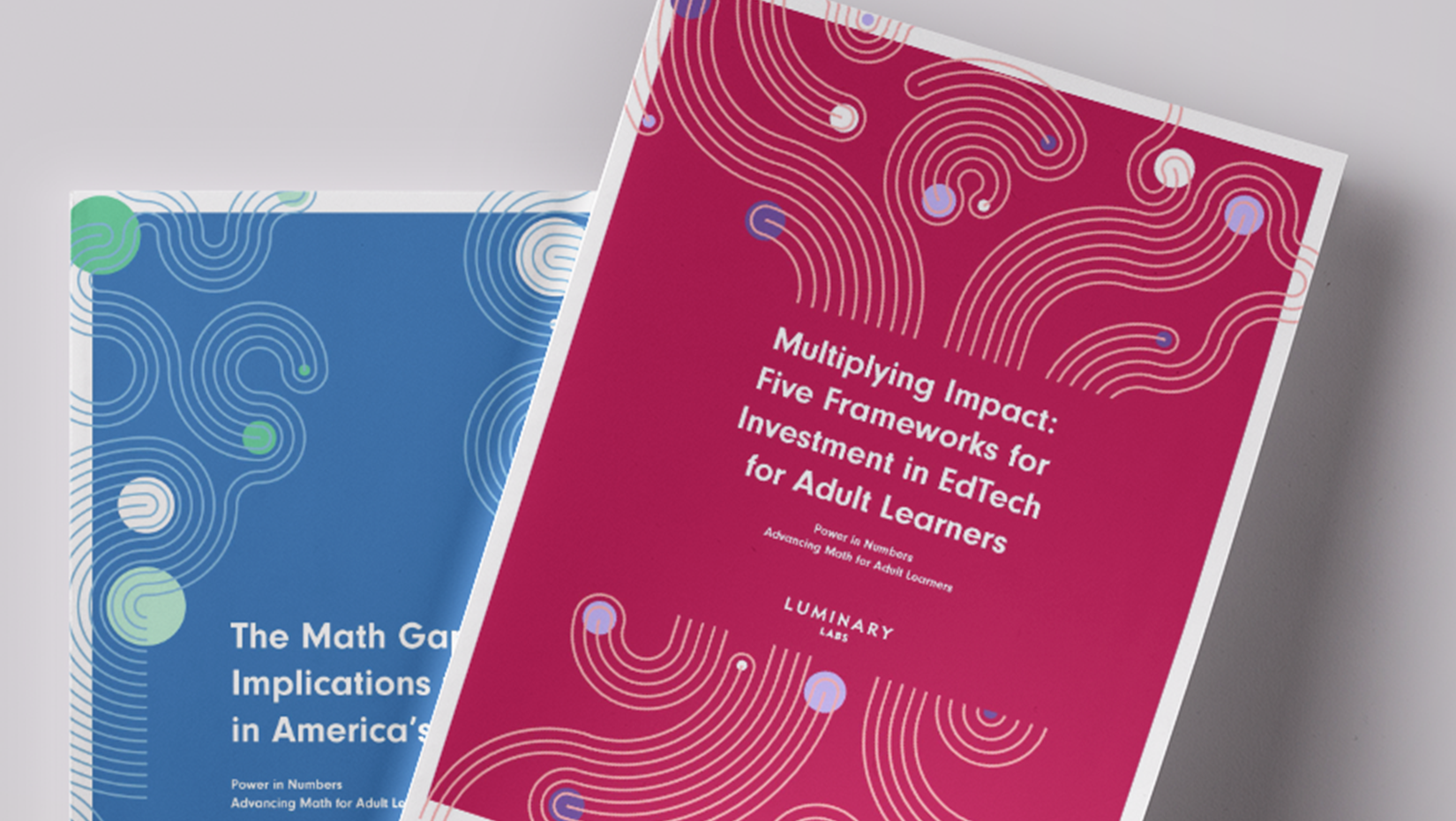Upskilling adults for the changing demands of the workforce is central to conversations about the future of work. Technology can be part of the solution, so we explored where edtech investors and developers should focus their investment. In a $9.5 billion edtech market, which technology solutions will have the biggest impact on adult education outcomes?
Our second Power in Numbers report, on behalf of the U.S. Department of Education, explores five areas where edtech offers compelling use cases for transforming adult learners’ experiences. In our first report, The Math Gap, we examined the potential for technology to serve the unmet needs of adult math learners and educators. We built upon that thesis in Multiplying Impact: Five Frameworks for Investment in EdTech for Adult Learners to identify learner-centric opportunity areas for edtech investors and developers who want to make an impact.
These opportunity areas can serve as a framework for evaluating technology to support the future of learning — from more traditional community college adult education to industry workforce development initiatives. There are many edtech solutions that can fit within this framework; here are a few examples:
Supplement the instructor
Impactful technology tools in the classroom don’t seek to replace the educator, but rather optimize their scarce time and resources. For mathematics in particular, AI-enabled grading solutions can help educators more quickly identify common issues with the material that can be addressed in class.
Design for life
Effective technology should also consider learner constraints outside of an educational setting. For adult learners, unpredictable work schedules and family responsibilities can make in-person attendance challenging, and distance learning can break down those barriers. Solutions like text message updates — already prevalent in other industries like healthcare — can provide adult learners logistical reminders and motivational support.
Engage the learner
Unlike K-12 students, adult learners aren’t required to attend a class. Keeping them engaged in the content — and tying it back to what they’re trying to achieve — is key. The majority of adults play video and computer games (and one-fifth of them even play games daily), so educational games have the potential to capture and retain adult learner interest.
Build the community
Considering that adult learners are more likely to participate in distance learning, tech tools that foster collaboration and a sense of community can provide support in lieu of in-person interaction. Simple (and often free) tools like message boards and Facebook groups are ways of creating an online network for adult learners to connect with their peers.
Connect the dots
Tech solutions that provide contextualization — a bridge between classroom content and real-world relevance — will resonate more with adult learners. Open educational resources (OERs) can be customized to learners’ interests and needs. A cohort of Power in Numbers adult classroom teachers have already curated and reviewed more than 70 OERs, strengthening the OER Commons’ library of free resources.
Don’t miss our final report. To receive Power in Numbers updates, sign up for the project newsletter.

